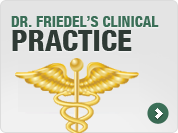Have you or a loved one been diagnosed with borderline disorder and are suffering from anxiety and panic attack symptoms?
Read the following and learn more about these symptoms and how they are treated in borderline disorder.
Anxiety and panic attack symptoms are common in people with borderline disorder. Symptoms of anxiety occur in almost 90% of people with the disorder. If you have borderline disorder, you may experience heightened levels of anxiety and panic attack symptoms, especially at times of stress. For example, this may occur when you feel you are personally criticized and rejected, or during periods of separation from people who are very important to you. Moderate to severe anxiety may also lead to physical symptoms, such as migraine headaches, abdominal pain and irritable bowel syndrome.
Panic Attacks
A panic attack is an acute and severe form of anxiety that occurs in about 50% of people with borderline disorder. Panic attacks are characterized (DSM-5) by a discrete period of intense fear in which four or more of the following symptoms develop abruptly and reach a peak within 10 minutes:
- palpitations, pounding heart, or increased heart rate
- sweating
- trembling or shaking
- sensations of shortness of breath or smothering
- feeling of choking
- chest pain or discomfort
- nausea or abdominal distress
- feeling dizzy, unsteady, lightheaded, or faint
- feelings of unreality or being detached from oneself
- fear of losing control or going crazy
- fear of dying
- numbness or tingling sensations
- chills or heat sensations
Symptoms can appear unexpectedly and suddenly, and for no apparent reason, and disappear either rapidly or slowly. People who suffer from anxiety and panic attack symptoms may also be fearful of placing themselves in circumstances from which escape may be difficult or embarrassing such as elevators, shopping malls and movie theaters. This is referred to as agoraphobia.
Treatment of Anxiety and Panic Attack Symptoms in Borderline Disorder
Effective treatment of disabling anxiety and panic attack symptoms in people with borderline disorder should be initiated promptly when these disorders occur. Such treatment usually consists of the use of medications and behavioral conditioning techniques.
The use of medications to treat anxiety and panic attack symptoms in patients with borderline disorder must proceed with care. This is so because these disorders are commonly treated with benzodiazepines (Xanax, Klonopin, Valium, etc.) which have been found to be harmful in most patients with borderline disorder because they increase impulsivity and have addictive potential. Therefore, in borderline disorder, other classes of medications are often required such as a temporary increase in the antipsychotic agent that may used as part of the treatment of the disordere (see Medications), and the addition an SSRI such as Zoloft (sertraline) or a non-addicting anti-anxiety agent such as BuSpar (buspirone). Increasing the dose of an antipsychotic agent, if one is being used, or adding buspirone, which has a different mechanism, may prove necessary for moderate to severe anxiety and panic attack symptoms.
In addition, a simultaneous course of cognitive behavioral therapy or of biofeedback specifically tailored to target anxiety and panic attack symptoms are often considered as beneficial components of the short- and long-term treatment of these problems. In milder cases of anxiety and panic attacks, these alone may be sufficient without the increase or addition of medications.









